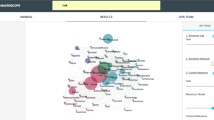Abstract
In this paper, some electronically gathered data arepresented and analyzed about the presence of the pastin newspaper texts. In ten large text corpora of sixdifferent languages, all dates in the form of yearsbetween 1930 and 1990 were counted. For six of thesecorpora this was done for all the years between 1200and 1993. Depicting these frequencies on the timeline,we find an underlying regularly declining curve,deviations at regular places and culturally determinedpeaks at irregular points. These three phenomena areanalyzed.
Mathematically spoken, all the underlying curves havethe same form. Whether a newspaper gives much orlittle attention to the past, the distribution of thisattention over time turns out to be inverselyproportional to the distance between past and present.It is shown that this distribution is largelyindependent of the total number of years in a corpus,the culture in which it is published, the language andthe date of origin of the corpus. The phenomenon isexplained as a kind of forgetting: the larger thedistance between past and present, the more difficultit is to connect something of the past to an item inthe present day. A more detailed analysis of the datashows a breakpoint in the frequency vs. distance fromthe publication date of the texts. References toevents older than approximately 50 years are theresult of a forgetting process that is distinctivelydifferent from the forgetting speed of more recentevents.
Pandel's classification of the dimensions ofhistorical consciousness is used to answer thequestion how these investigations elucidate thehistorical consciousness of the cultures in which thenewspapers are written and read.
Similar content being viewed by others
References
Baayen, R.H. Word Frequency Distributions. Kluwer Academic Publishers (to appear).
Berkel, K. van. “Inleiding”. In Geschiedenis: een hoofdvak. Eds. A.Th. van Deursen et al. Leiden, 1985, pp. 1–4.
Bieber, Horst. “Geschichte als Hintergrund in Kommentar und Leitartikel”. Geschichtsdidaktik, 11 (1986), 357–363.
Chitashvili, R.J. and R.H. Baayen. “Word Frequency Distributions”. In Quantitative Text Analysis. Eds. G. Altmann and L. Hrebícek. Trier: Wissenschaftlicher Verlag Trier, 1993, pp. 54–135.
Friedman, W.J. About Time. Cambridge, 1990.
Good, I.J. and G.H. Toulmin. “The Number of New Species and the Increase in Population Coverage, When a Sample is Increased”. Biometrika, 43 (1956), 45–63.
Jansen, C.J.M. and M.M.W. Pollmann. “On Round Numbers” (in preparation).
Koehler, R. Zur linguistischen Synergetik: Struktur und Dynamik der Lexik. Bochum: Brockmeyer, 1986.
Kuçera, Henry and W. Nelson Francis. Computational Analysis of Present-Day American English. Providence Rhode Island, 1965.
Mandelbrot, B. “An Information Theory of the Statistical Structure of Language”. In Communication Theory. Ed. W.E. Jackson. New York: Academic Press, 1953, pp. 503–512
McManus, John H. (1992) “What Kind of Commodity is News?” Communication Research, 19, 787–805.
Muller, Ch. Principes et méthodes de statistique lexicale. Hachette, Paris, 1977.
Pandel, H.-J. “Dimensionen des Geschichtsbewußtsein. Ein Versuch, seine Struktur für Empirie und Pragmatik diskutierbar zu machen”. Geschichtsdidaktik, 12(2), 130–142.
Pandel, H.-J. “Geschichtlichkeit und Gesellschaftlichkeit im Geschichtsbewußtsein. Zusammenfassendes Resümee empirischer Untersuchungen”. In Geschichtsbewußtsein empirisch. Eds. Bodo von Borries, Hans-Jürgen Pandel and Jörn Rüsen. Pfaffenweiler, 1991, pp. 1–23.
Pollmann, Thijs. “On Forgetting the Historical Past”. Memory and Cognition, 26(2) (1998a), 320–329.
Pollmann, Thijs. “The Process of Cognitive Distance: A Quantitative Analysis of Some Aspects of Historical Culture”. Historical Social Research, 23(4) (1998b), 79–93.
Pollmann, Thijs. “Forgetting and the Ageing of Scientific Publications”. Scientometrics, 47(1) (2000), 43–54.
Schörken, Rolf. Begegnungen mit Geschichte. Vom ausserwissenschaftlichen Umgang mit der Historie in Literatur und Medien. Stuttgart, 1995.
Sigurd, Bengt. “Round Numbers”. Language and Society, 17 (1988), 243–252.
Yule, G.U. The Statistical Study of Literary Vocabulary. Cambridge: Cambridge University Press, 1994.
Zipf, George Kingsley. Human Behavior and the Principle of the Least Effort. An Introduction to Human Ecology. New York: Hafner, 1949.
Zipf, George Kingsley. The Psycho-Biology of Language. Cambridge MA: M.I.T. Press, 1968.
Author information
Authors and Affiliations
Rights and permissions
About this article
Cite this article
Pollmann, T., Baayen, R.H. Computing Historical Consciousness. A Quantitative Inquiry into the Presence of the Past in Newspaper Texts. Computers and the Humanities 35, 237–253 (2001). https://doi.org/10.1023/A:1017563931115
Issue Date:
DOI: https://doi.org/10.1023/A:1017563931115




